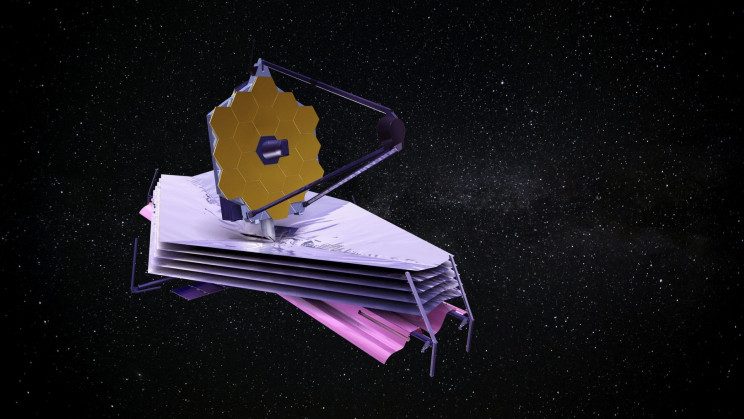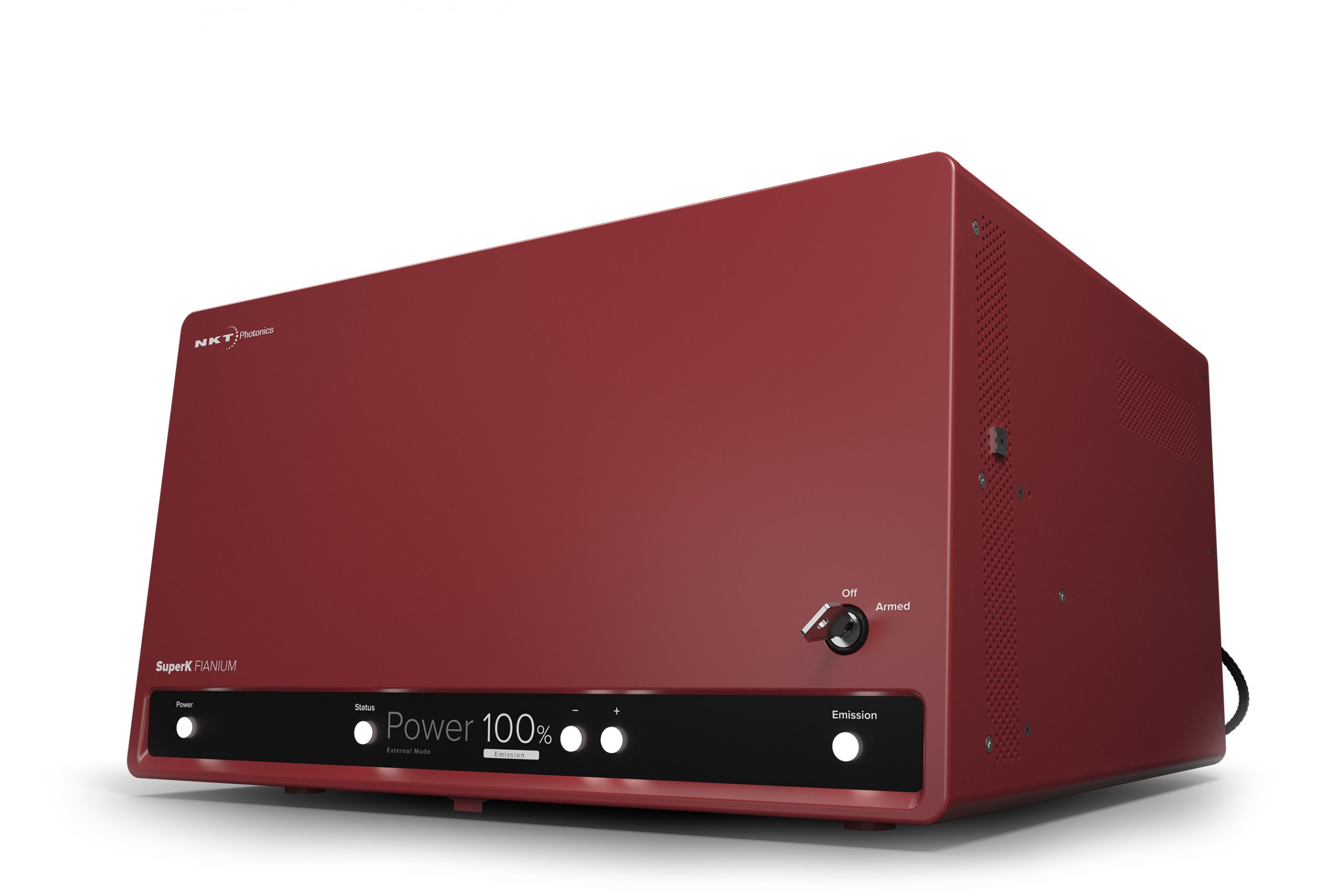See how galaxies were born
The James Webb Space Telescope works as a time machine. It can detect light from the formation of galaxies that happened 13.5 billion years ago. It will study the birth of the first stars, black holes, and galaxies. And it will investigate how they evolve. It can even determine the chemical composition of planets and their atmospheres.
A 100 times more powerful than Hubble
The James Webb Space Telescope will be a supplement to the existing Hubble Space Telescope and is 100 times more powerful. The Hubble Space Telescope was launched in 1990. It orbits the Earth at a 570 km distance and has a circular primary mirror with a 2.4-meter diameter. The JWST is going to be 1.5 million km away from Earth and has a 6.5-meter-high honeycomb-shaped primary mirror.
Where Hubble is designed to see ultraviolet, visible, and near-infrared light, JWST can see near-infrared and mid-infrared light. Dust in space blocks visual light, but infrared telescopes can see the stars and planets behind the dust. NASA has a great web page that explains the differences between Hubble and JWST.
Who was James Webb?
The James Webb Space Telescope is named after James Webb, former second administrator at NASA. Webb led the Apollo space program that ran from 1961 to 1972 and landed the first crew on the Moon in 1969. Webb passed away in 1992. If you want to know more about the person, James Webb, pop over to NASA’s FAQ.
Our SuperK lasers played a role
Our SuperK supercontinuum white light lasers have been used in multiple locations over many years.
It was used:
- For the OSIM (Optical Simulator) which simulates the Webb Telescope at Goddard Space Flight Center.
- On the wavefront sensing testbed to simulate bright stars at Goddard Space Flight Center.
- For reflectivity measurements of the telescope’s tertiary mirror at Johnson Space Center.
- For reflectivity measurements at the Jet Propulsion Laboratory.
- For cryogenic testing of the telescope and science instruments (OTIS) at Johnson Space Center.
- For testing of the science instruments at NASA’s Goddard Space Flight Center.
- On the Testbed Telescope (TBT) at Ball Aerospace to achieve TRL-6 on the wavefront sensing and control (WFSC) subsystem.
- For testing of the aft-optics system (telescope’s tertiary mirror and fine steering mirror).
- For calibrating of NIR cameras.
Watch the launch on NASA’s website
An Ariane 5 rocket will launch JWST into space from Europe’s Spaceport in French Guiana. The launch is planned for December 25, 2021. But the date is not set in stone, unforeseen events can delay it.
Stay on top of the date with NASA’s countdown webpage.
When the big day arrives, watch the launch on NASA’s website.
More online information
There is a lot of fascinating information about JWST on the web. We have gathered some links if you want to know more.
- NASA’s JWST 2-page fact sheet
- ESA’s JWST interactive launch kit
- The Secrets of the Universe’s 7-minute overview video
- NASA’s FAQ on the JWST
- NASA’s landing page for everything JWST
The James Webb Space Telescope is an international collaboration between the National Aeronautics and Space Administration, NASA, the European Space Agency, ESA, and the Canadian Space Agency, CSA.
Publications
Read how researchers have used our lasers for space telescope research.
- Design and Performance Analysis of a prototype Holographic Aperture Mask for the Keck OSIRIS Imager adapted from D. S. Doelman, J. P. Wardenier, P. B. Tuthill, M. P. Fitzgerald, J. Lyke, S. Sallum, B. Norris, N. Z. Warriner, P. Wizinowich, C.U. Keller, M. J. Escuti, F. Snik, 2021.
- Testbed demonstration of high-contrast coronagraph imaging in search for Earth-like exoplanets by Byoung-Joon Seo, Keith Patterson, Kunjithapatham Balasubramanian, Brendan Crill, Talso Chui, Daniel Echeverri, Brian Kern, David Marx, Dwight Moody, Camilo Mejia Prada, Garreth Ruane, Fang Shi, John Shaw, Nick Siegler, Hong Tang, John Trauger, Daniel Wilson, Robert Zimmer published at SPIE Optical Engineering + Applications, 2019.
- Wide-band white light sparse-aperture Fizeau imaging interferometer testbed for a distributed small-satellites constellation by Jiang A, Wang S, Dong Z, Xue J, Wang J, Dai Y published in Applied Optics, 2018.
- Vibrationally resonsant nonlinear optical microscopy with infrared light thesis by Author Hanninen, University of California Irvine, 2018.
- Error analysis of the piston estimation method in dispersed fringe sensor by Yang Li, Sheng-Qian Wang, Chang-Hui Rao in Chinese Physical Society and IOP Publishing Ltd, 2017.
- Results of the astrometry and direct imaging testbed for exoplanet detection by Eduardo A. Bendek, Ruslan Belikov, Eugene Pluzhnik, Olivier Guyon, Thomas Milster, Lee Johnson, Emily Finan, Justin Knight, Alexander Rodack published at SPIE Optical Engineering + Applications, 2017.
- Observing Exoplanets with High-dispersion Coronagraphy. II. Demonstration of an Active Single-mode Fiber Injection Unit by D. Mawet, G. Ruane, W. Xuan, D. Echeverri, N. Klimovich, M. Randolph, J. Fucik, J. K. Wallace, J. Wang, G. Vasisht, R. Dekany, B. Mennesson, E. Choquet, J.-R. Delorme, E. Serabyn published in The Astrophysical Journal, 2017.
- EXCEDE technology development IV: demonstration of polychromatic contrast in vacuum at 1.2 λ/D by Dan Sirbu, Sandrine J. Thomas, Ruslan Belikov, Julien Lozi, Eduardo Bendek, Eugene Pluzhnik, Dana H. Lynch, Troy Hix, Peter Zell, Glenn Schneider, Olivier Guyon published at SPIE Optical Engineering + Applications, 2015.
- Design of the master optical reference for the James Webb Space Telescope by J. Scott Knight, Ben Gallagher, Doug Frazier, Tony L. Whitman, Lee D. Feinberg, Murzy Jhabvala, Bill Hayden published at SPIE Astronomical Telescopes + Instrumentation, 2014.



